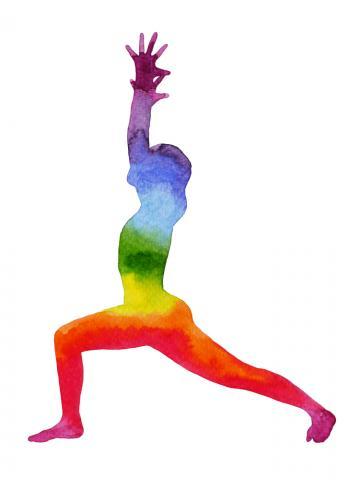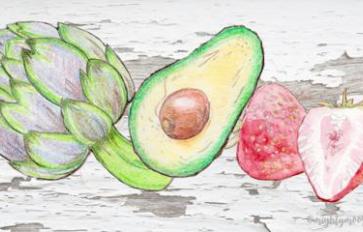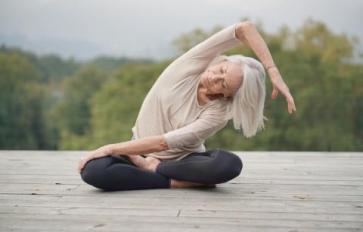
Before ever taking my first yoga class, my knowledge was limited to terms like “Warrior II” and “Downward Dog.” Well my practice happened to start with Bikram yoga, which doesn’t have any Warriors or Dogs. Just my luck, right?
It would be two years before setting foot in an actual Vinyasa class, and eventually going through a 200-hour teacher training. I learned a lot during that time period.
Yoga is a metaphor for life. Who we are on the mat is who we are off of it in the real world. When we fall down on our mat, or in life, what's the best way to react? Get angry or self deprecating? Or smile and embrace it? Very few problems (if any) are ever solved with anger and loathing.
When I started practicing Vinyasa, I was surprised to find out it’s both a style of yoga and a sequence --the sequence being the flow of “Chaturanga” to “Upward-Facing Dog” to “Downward-Facing Dog”. Yes, I eventually learned how to do a “Downward-Dog” as well as “Warrior II,” and several other posture and non-posture related aspects of Vinyasa. It was incredibly eye-opening, and I wish I would have known about all of it sooner.
Which leads me to this list. Here are 5 things you didn’t know about Vinyasa Yoga:
1. Variety is the spice of life
In general, people do not like change. It is one of the reasons why I enjoyed Bikram yoga so much; I knew what to expect. The same 26 postures and 2 breathing exercises, done in the same order. Every. Time. There is comfort in reliability.
Not going to lie though, it can get boring.
No two Vinyasa classes are the same, which is fun as a student and as a teacher. Once I learned to let go of expectations - trying to guess what posture was coming next and started embracing uncertainty - I grew. A LOT. My mental clarity increased and my practice went to a different level. It was in that moment I understood a fundamental principle of yoga - the only aspect of our life we have control over is our reaction. Life is unexpected - accidents happen, houses burn down, loved ones die. We have no control of the outside forces that impact our lives, but we do have control on how we react.
When the unexpected happens, pause, and take a breath. Which leads me to...
2. Breathing matters
Yoga really is all about breath. Mindful and purposeful breath.
Without breath, we wouldn't be alive. The problem is that breathing is automatic, so we don't always give it the attention it deserves. Our breath is powerful and a great indicator of what we are feeling. When we are scared or excited our breathing can get rapid and shallow. When we are at peace our breath is calm and deep. If you can control your breath, no one can control you.
The beauty of yoga is that it taught me how to breathe. To connect breath and movement...and WOW was it powerful. In vinyasa, when we flow, it is one breath to one movement. It also makes sense - "inhale" when we rise, "exhale" when we contract.
In Bikram we breathe, but because of the static poses, it can be tough to see how powerful breath can be. It wasn't until I started flowing and tying my breath to a posture that I felt the strength and peace within myself. It wasn't easy; there were many times I "inhaled" on an "exhale," and took an extra breath on a chaturanga. It still happens, which is the beauty of yoga. It's a practice, not a perfection.
3. You will sweat
What I liked about hot yoga is the heat. It leads to sweating, which leads to me feeling like I got an incredible work-out of body and mind (it takes a lot of mental discipline to do yoga for 90 minutes in a 105° room). I was worried about not breaking a sweat and therefore not being challenged enough physically and mentally.
Yeah, I was wrong.
Yoga is a workout - period. Vinyasa’s constant movement requires stamina. Also, since new postures are being introduced in each class it works out different muscles. It all leads to sweating. The other aspect of vinyasa I discovered is that the student can make the class as easy or as challenging as they want it. There is always a deeper level to take a posture. If revolved-chair pose isn't enough, take it into side crow. If stepping to the top of your mat from downward dog is too easy, float. Still want more? Jump into a handstand.
While your body can be taken to extreme levels, vinyasa also taught me the importance of being kind to myself. We beat ourselves up and like it. Push our bodies to extreme limits, to the point of pain and injury, and keep coming back for more. We love it. Crave it. Why is that? I have a theory - to feel. So many people "go through the motions" of their lives that they become disconnected from themselves, their bodies. So we punish ourselves to feel something, because it's better than being numb. Even worse, sometimes we think we need to suffer, because we deserve to. Vinyasa showed me when I need to push myself to grow, and when I need to be kind to myself to grow.
4. Flowing is fun
I love to dance. To me, flowing is like dancing. I've actually had a couple people tell me after a vinyasa class that I looked like I was dancing during a flow. My body loves that - connect breath to a movement, add in music - and I'm at home. This is probably where I really began to love vinyasa as a practice. It's not about the other people in the room, or how I look in a posture, it's how the posture feels.
There is a medicine in movement; when we stop moving our joints and muscles deteriorate. Don't get me wrong there is beauty in stillness, but our bodies were made to move. So flow, dance, and have fun.
5. Every body is different
What is great about vinyasa is that it brings people of all shapes and sizes to class. The issue comes when comparing what a posture looks like in one body versus another. "Wow! Her leg goes into a standing split in her 3-legged dog. I can't even keep my leg straight." "His heels touch the ground in Downward Dog, mine are nowhere near that." My practice changed when I learned about yoga anatomy during teacher training. The biggest lesson? We are all built differently! Okay. Not breaking news, but I had quite the "lightbulb" moment when this little nugget finally sunk in.
Some people are born with really open hips, so standing splits and half pigeon are easy. Some people are born with longer arms, so scales pose and jump throughs come faster. Me? I have short arms. During my years in Bikram I had a difficult time grabbing my heels in Rabbit pose, and would get really frustrated. It wasn't until I realized that, anatomically, the posture is difficult for someone built with short arms. When I finally understood that my practice changed. Make the postures work for our bodies, not that our bodies need to work for the posture.
Maybe my body will get into a pose one day, maybe it won’t. As long as you are stable and in proper alignment, you get all the benefits of the posture.
Bonus. Smiling helps
There is nothing wrong with being serious about your practice, but it can be taken too seriously. Yoga is supposed to be fun! I have seen many students, including myself, get angry when they fall out of a posture. That anger or frustration is just our "ego", not our "self." A fellow instructor has a great saying during class, "If you fall down - laugh. If your neighbor falls down - laugh harder!" It definitely gets a chuckle from the room, but also conveys a good point. Yoga is a metaphor for life. Who we are on the mat is who we are off of it in the real world. When we fall down on our mat, or in life, what's the best way to react? Get angry or self deprecating? Or smile and embrace it? Very few problems (if any) are ever solved with anger and loathing.
Each day is different in our bodies. Some days balancing is there, and other days it's not. As I mentioned earlier, the only part of our lives we have total control over is how we react to a situation. In that case, I choose laughter, a smile, and acceptance over anything else.








